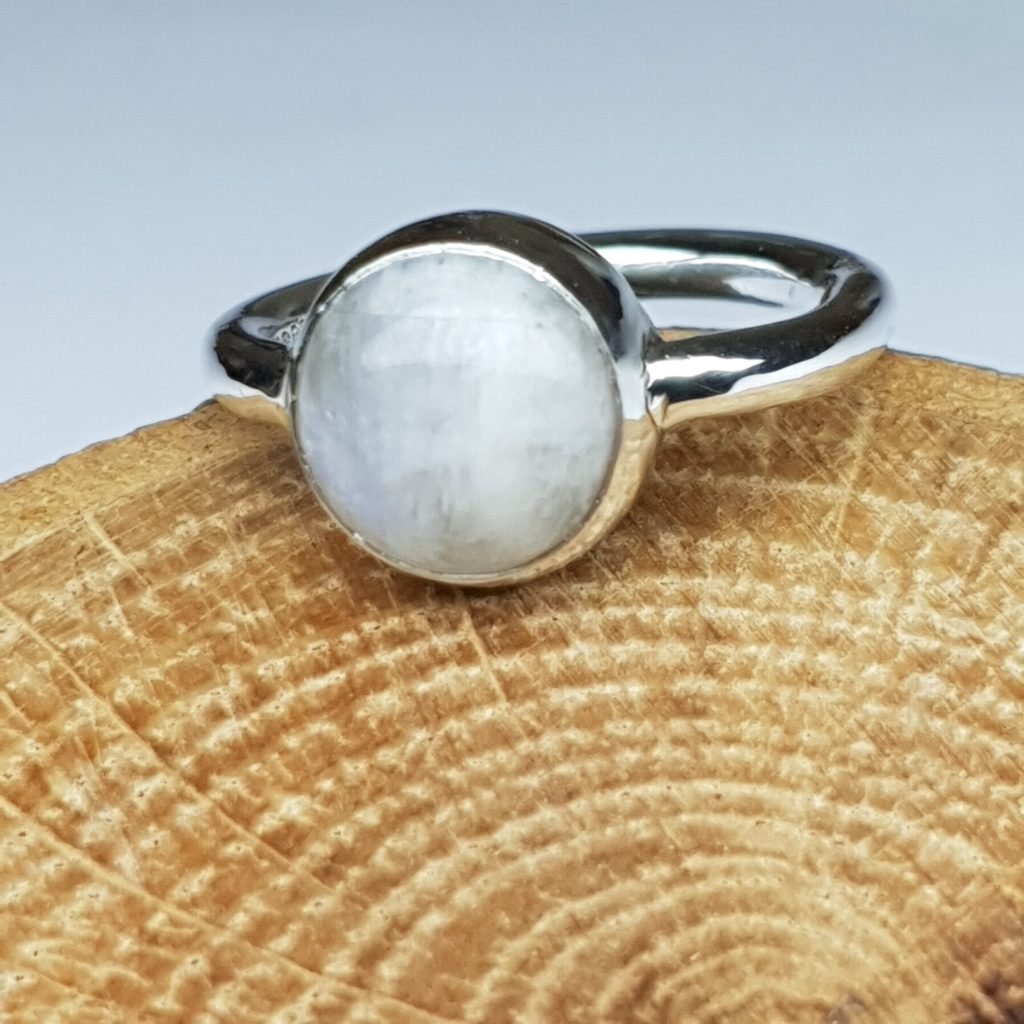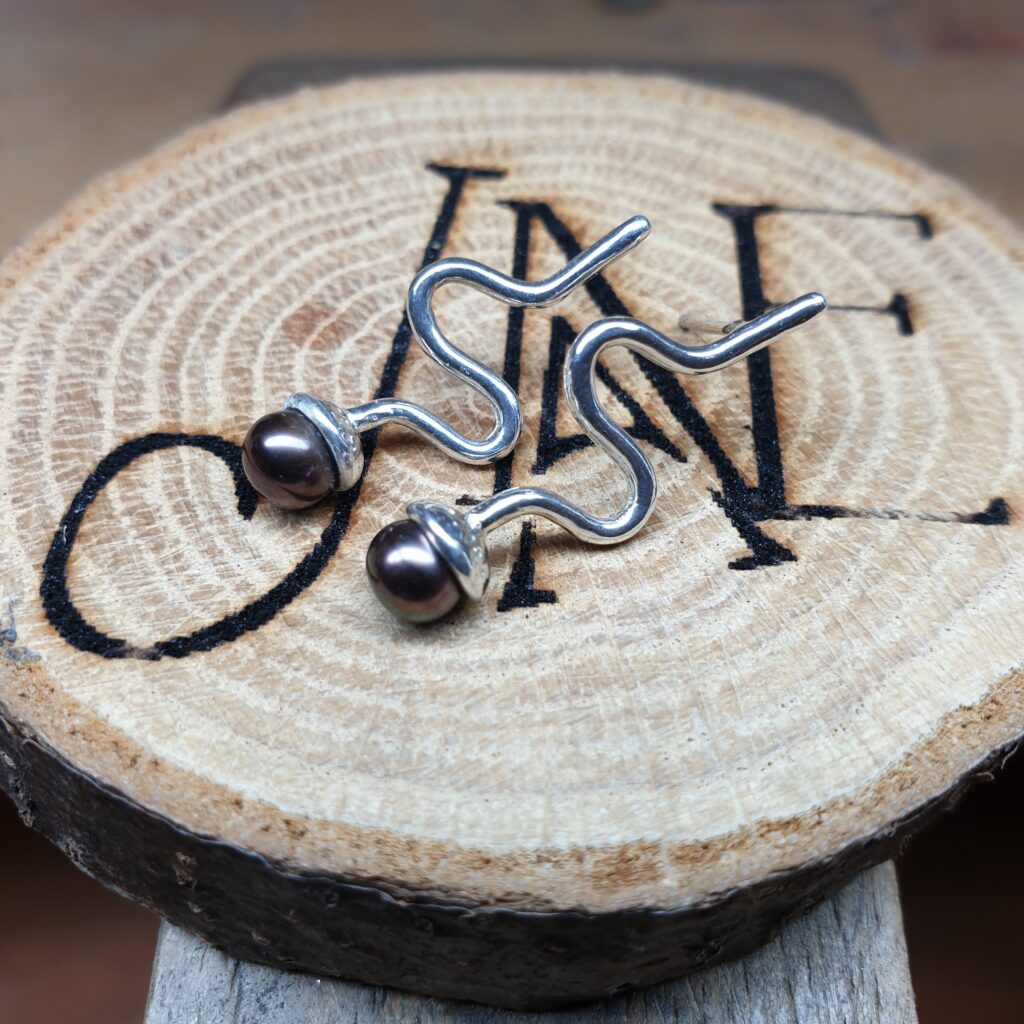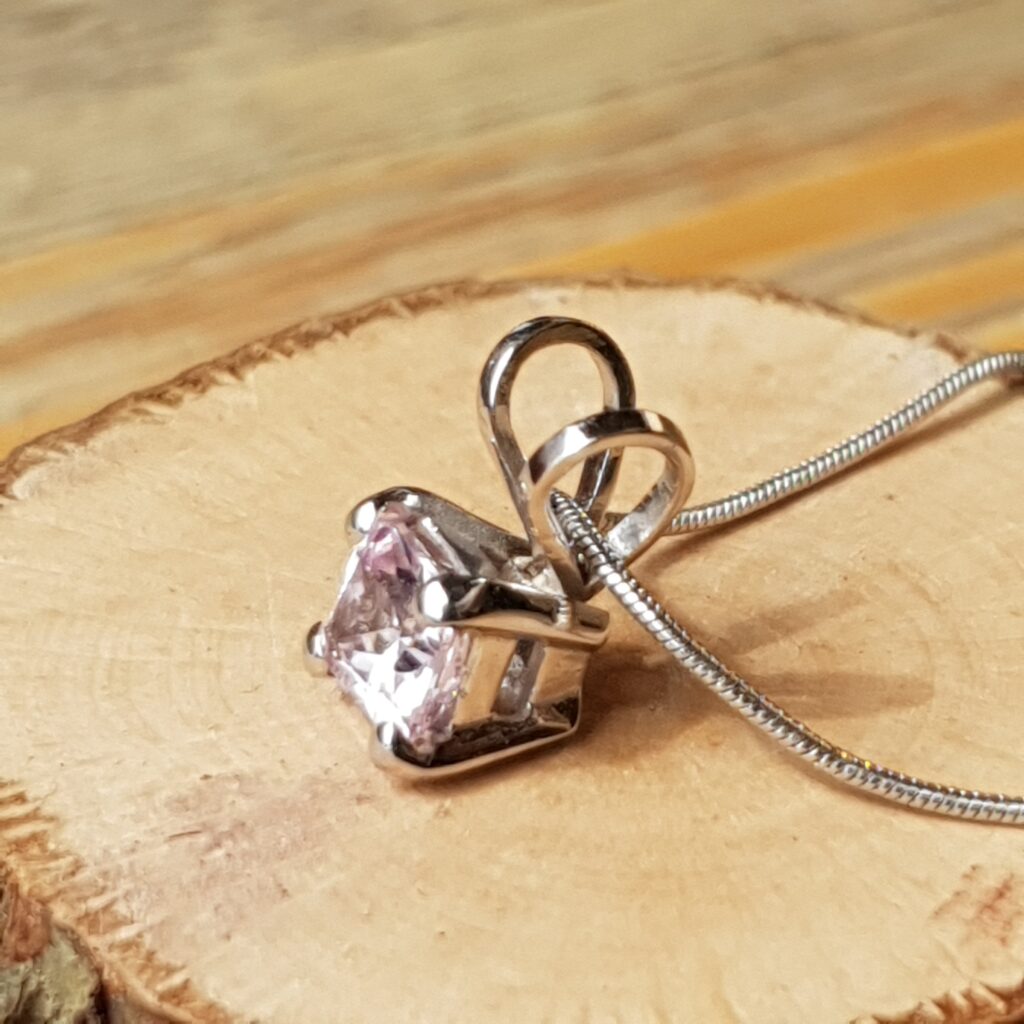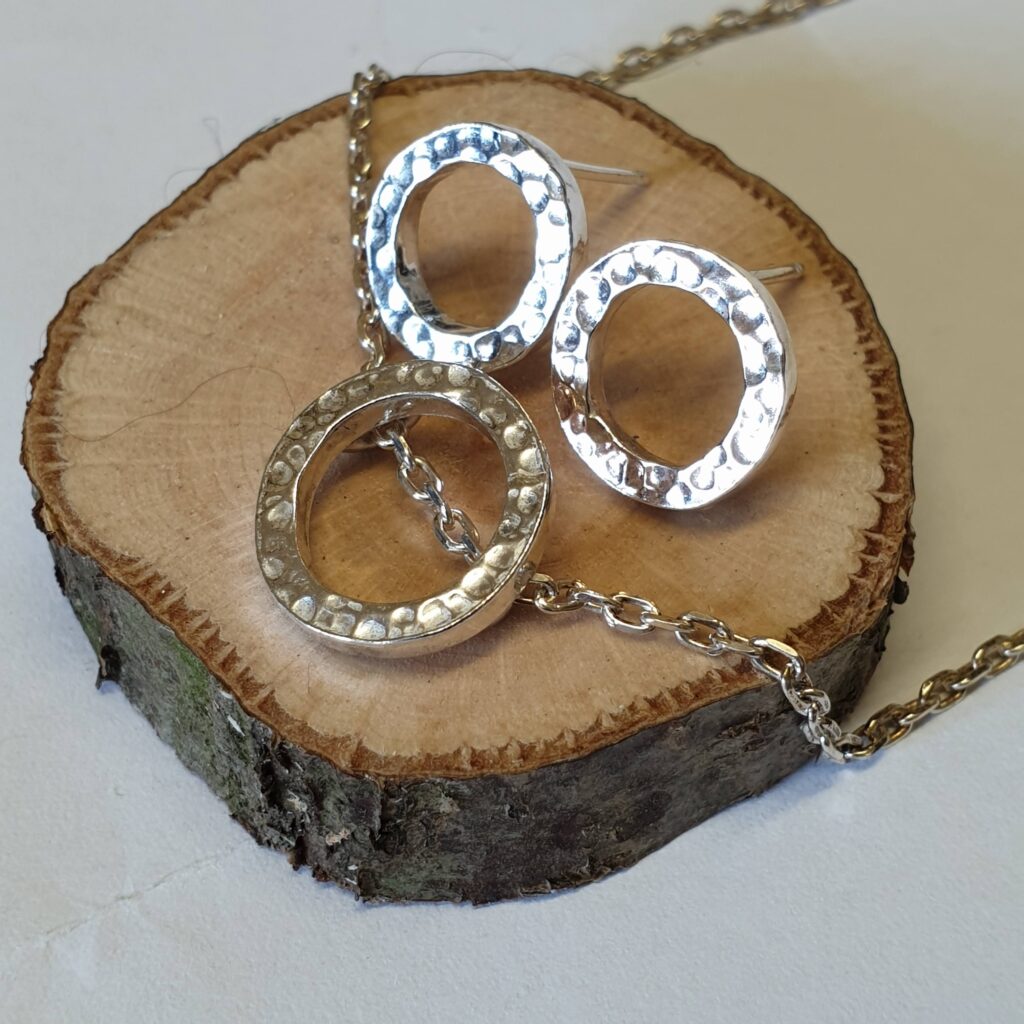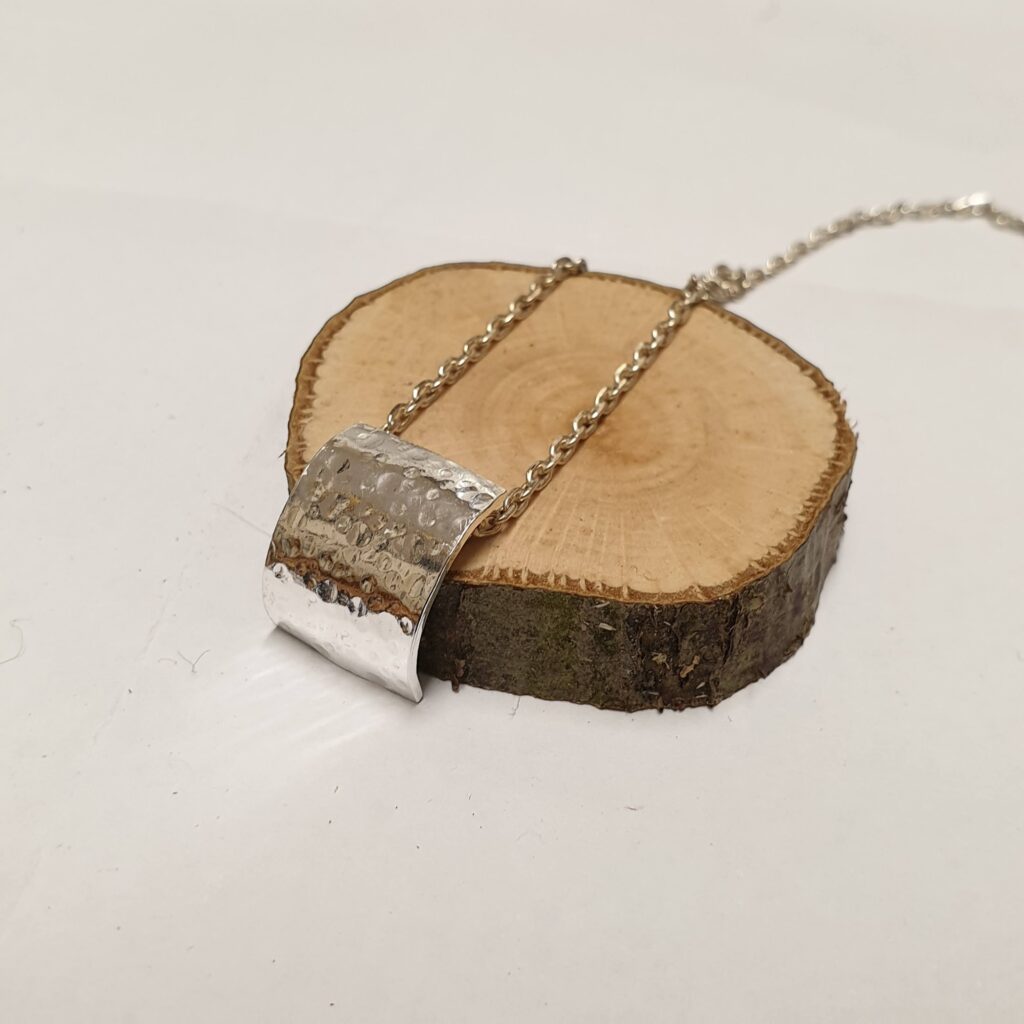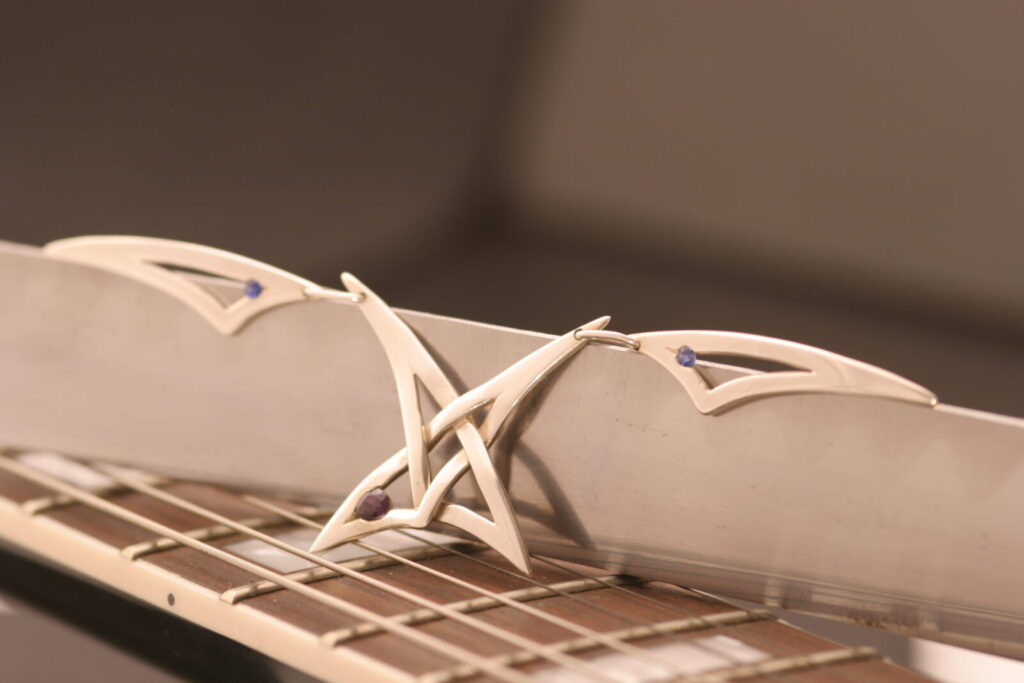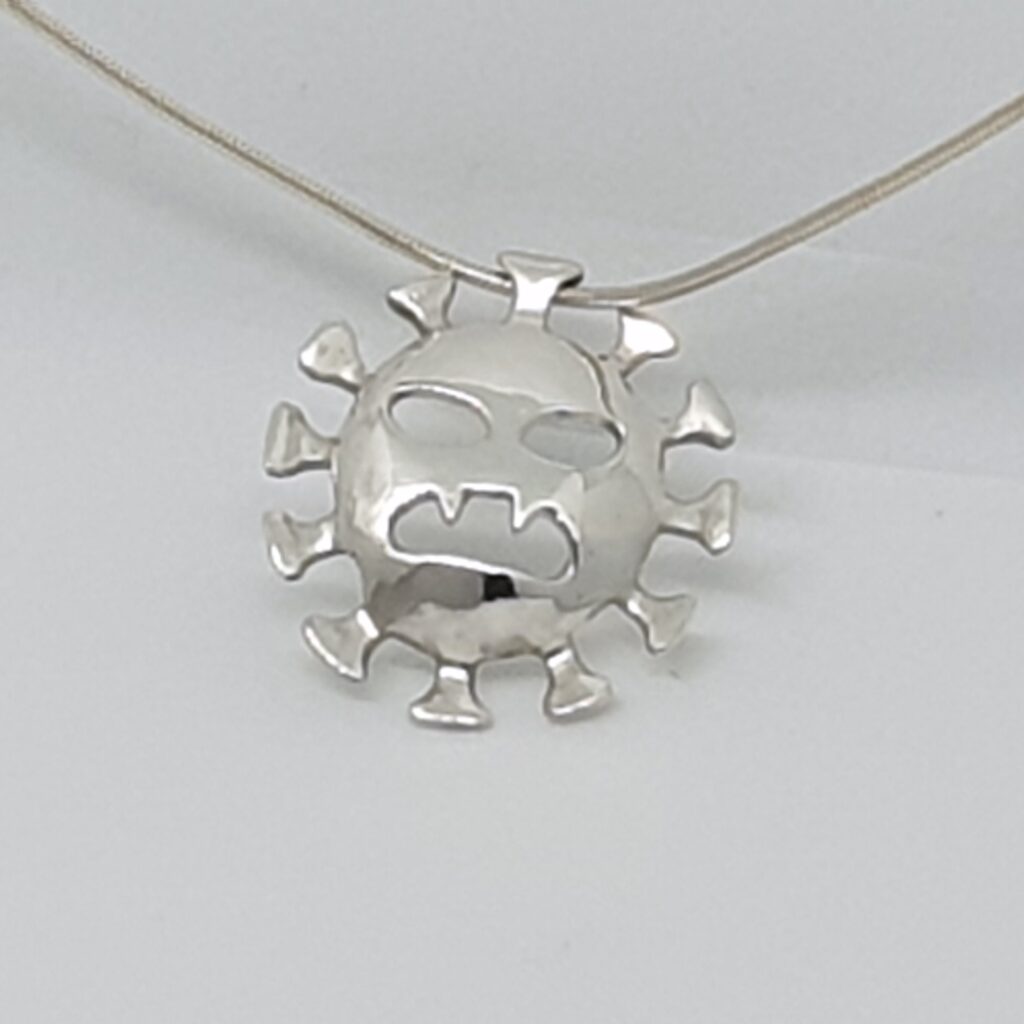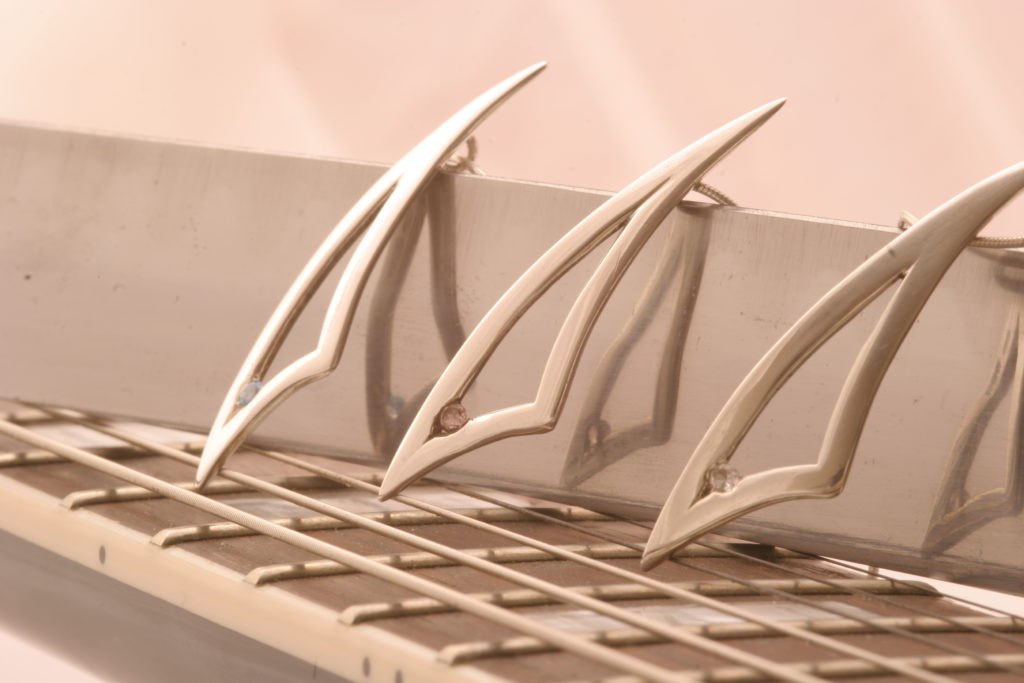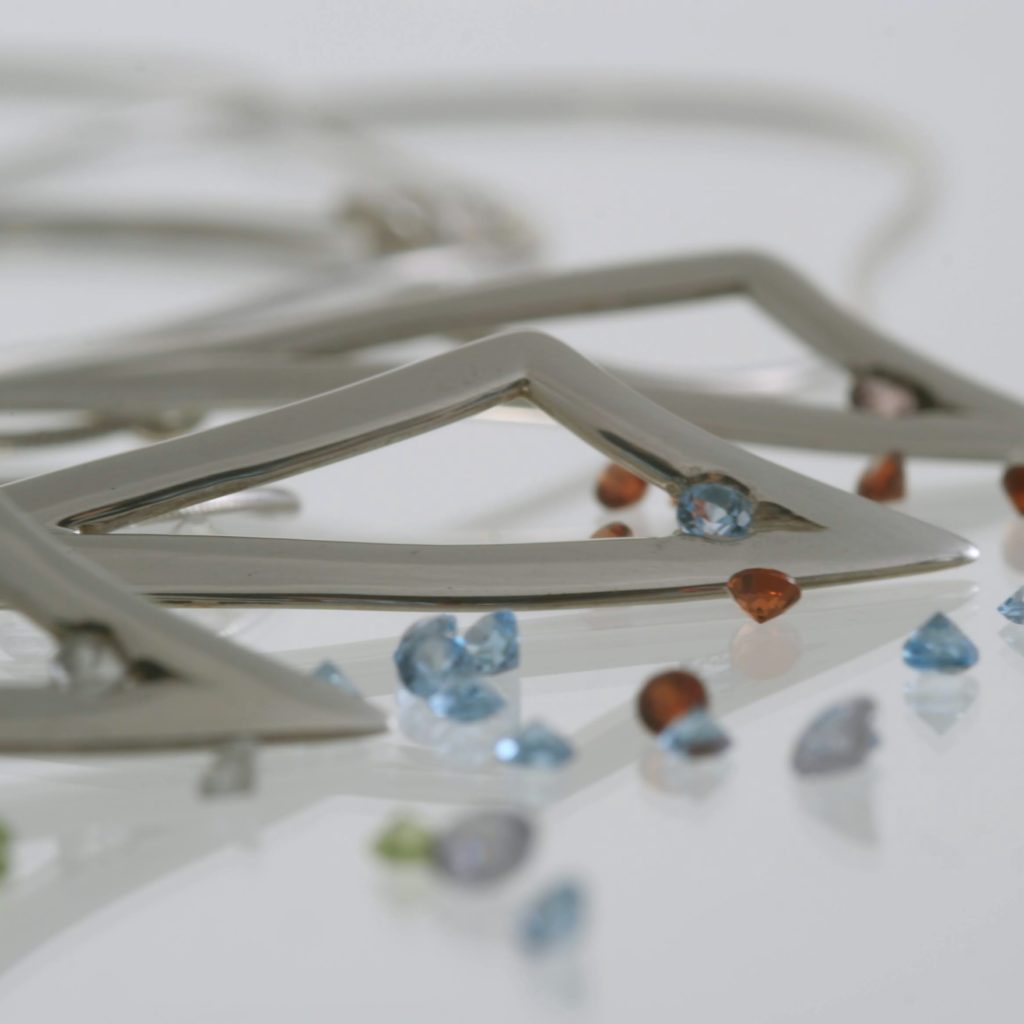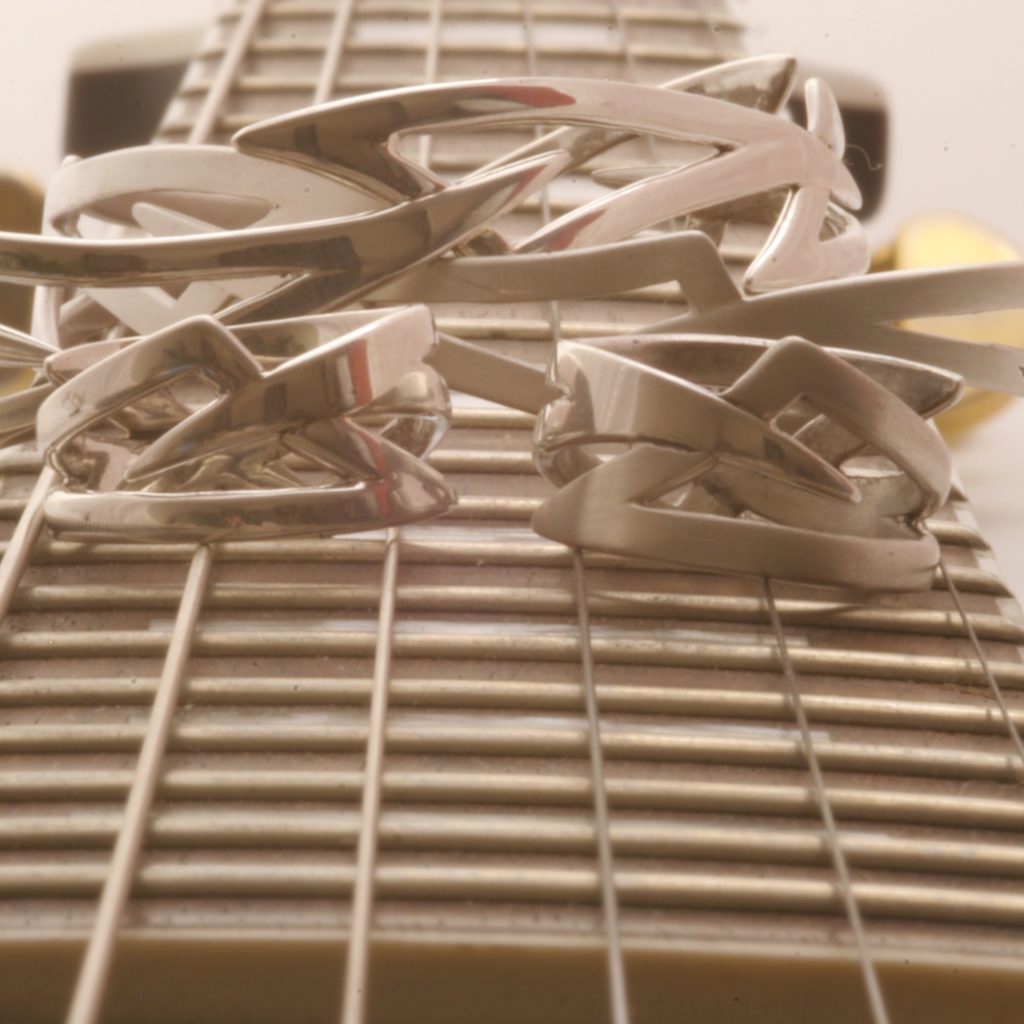(the method I used to create the monstera earrings)
Tools & materials used
1mm sterling silver sheet, size 4 & 6 saw blades, 0.5 drill bit, pilar drill, doming punches, hammer, 1mm sterling silver round wire, 2mm masonry nail, hard solder, rouge paste.


With a size 4 saw blade I cut out the required shapes from 1mm sterling silver sheet. I then used a pillar drill with a 0.5mm drill to create some holes, then with a size 6 saw blade I enlarged those holes to the shape I wanted for the detail. Using a set of doming punches & hammer I then proceeded to dome the shapes in opposite directions to create mirror images of each other.
Once the desired shapes were perfect, I hung them from hoops to ascertain the fall and slant needed to frame the face.

Next, I made the fixings.

The jump loops were created by tightly wrapping 1mm sterling silver round wire around a 2mm masonry nail to fashion a piece that resembles a spring. Using the saw, I then cut a straight line along the spring to release all the separate hoops.

After cutting a hoop in half I then soldered one half to the back of the leaf behind the lower leaf detail with hard solder. Before continuing I cooled and coated the solder joints on the earring with rouge paste to keep the solder in place then I soldered the other half to the top leaf detail. I then cooled, cleaned and attached the earring posts remembering to cover the earring solder joints with rouge paste.

Once satisfied with all the solder joints the clean-up begins. The first job is to remove all the solder spills, to do this I used a one-sided course swiss file. I then used a size 6 saw to clean up the inside of the jump loops to ensure the earring hoops fit through smoothly, finishing with the fine half round swiss file. Finally satisfied the surface is true the polishing can begin. Please refer to the polishing blog for the Monstera Pendant as I always use the same stages for a mirror finish.













